Haeckels founder Dom Bridges: ‘Margate changed my life’

Simply sign up to the Style myFT Digest -- delivered directly to your inbox.
My personal style signifier is a hat, usually a woolly one, such as my bright yellow one by Oliver Spencer. But I have weirder hats too, including a Vivienne Westwood Buffalo that I bought before Pharrell Williams wore his to the Grammys; I’m not sure I’ll ever wear it because Pharrell has made it his own, but I love that I own something with Westwood’s name on it. She’s incredible.
The last thing I bought and loved was a beautiful guitar, the best I’ve ever played, from Fidelity Guitars in Cambridge. It’s a bit beaten-up and has a single pickup, which lends it clarity of tone. I like messing around and getting lost in my own sounds. This felt like a special transaction because I wanted to buy a guitar that was made in England, especially as we were mid-Brexit. When I found Fidelity, I felt hope – that maybe we were going to be OK and this country could come up with everything we need. fidelity-guitars.co.uk
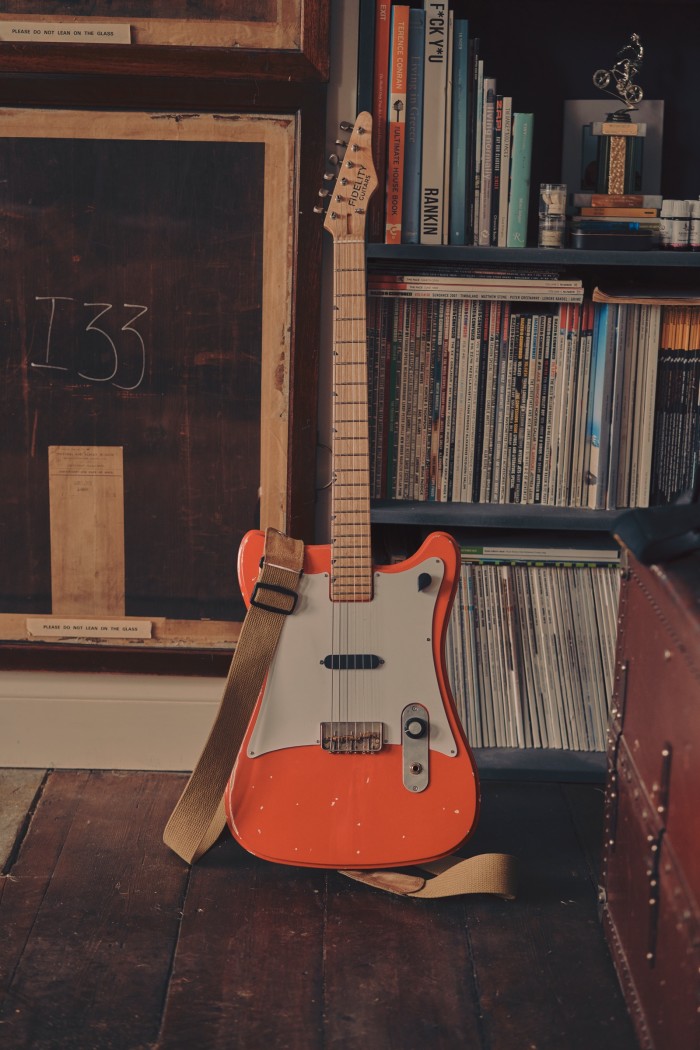
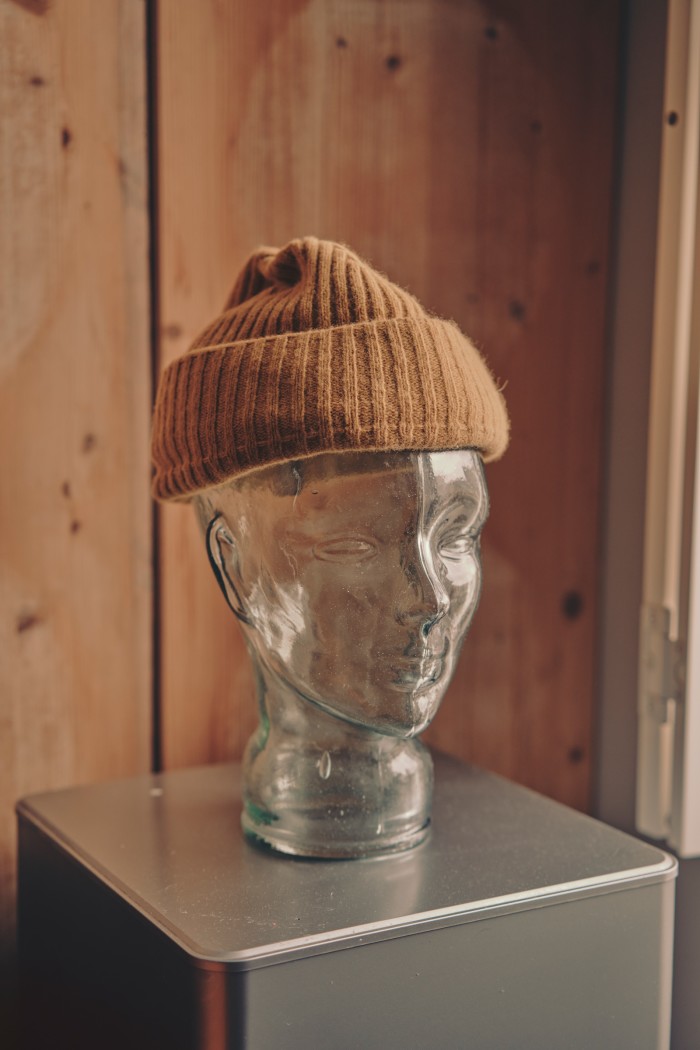
The place that means a lot to me is Margate. I’ve lived in LA and travelled all over, but Margate changed my life. It told me who I was, and then gave me a stage to be that person. It had the sea and the beach but it wasn’t perfect; it had grit. It felt like I could be part of it; I felt relevant.
The podcast I’m listening to is one of about 24 I have on the go: I am hotwired into a podcast in any spare moment. I started with 99% Invisible, about the power of design, but my current obsession is the complexities of soil, so I’ll listen to The Food Grower Podcast or interviews with farmer and writer Joel Salatin; I’m educating myself with a view to opening a farm. And it would be sacrilege not to mention The Blindboy Podcast – a genuinely unique and twisted mix of psychology, humour and social issues from the Irish comedian.
When I need to feel inspired, I go to the beach. For the big thoughts to come I need noise in the background but for my eyes to be empty. That’s how I problem-solve. The ocean does that for me.
My style icon is music producer Rick Rubin. I subscribe to his idea of wearing the same thing over and over, which is usually shorts and a T-shirt. A downside of modern life is that there are too many things to think about. What’s important is asking yourself, what’s being made; what can I do next?
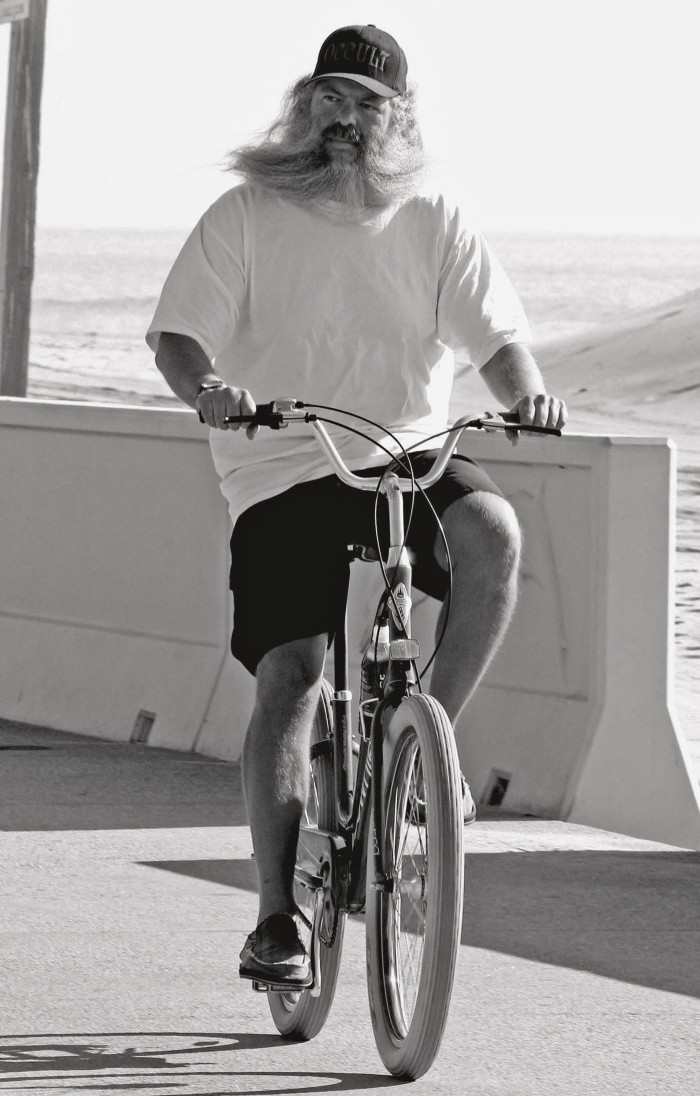
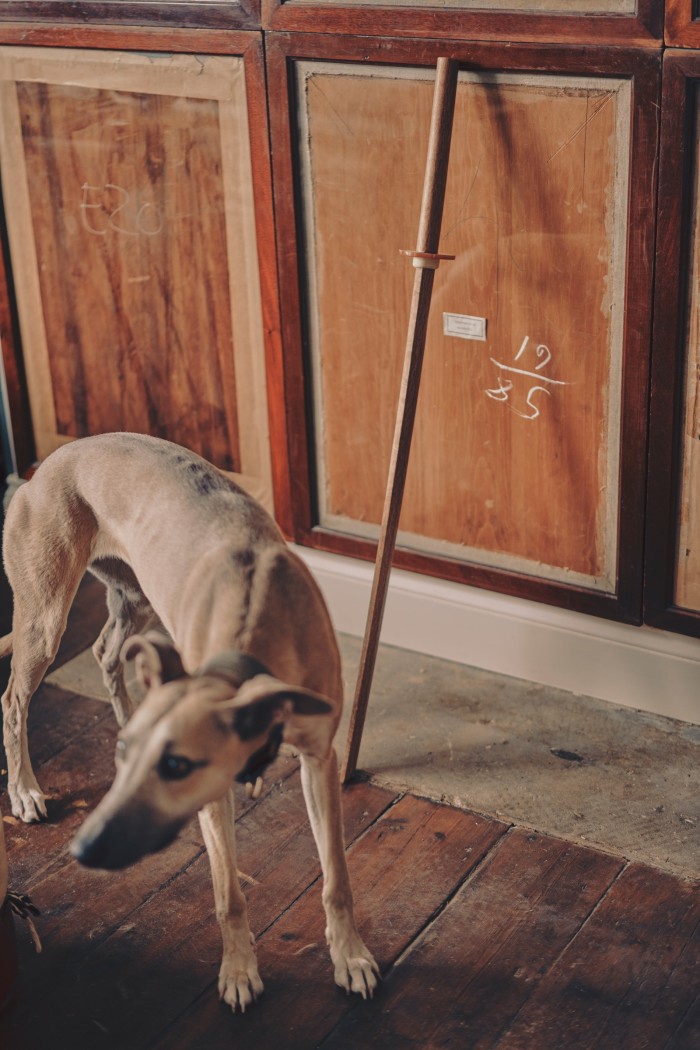
The best gift I’ve given recently is a rescue dog called Sharon. I manipulated her past my wife by saying she was a gift for our son, who we adopted before lockdown. Sharon and our son share a similar experience; they’ve both had to adapt to a new environment, so they’ve helped each other settle. Their bond is quite radical and beautiful. When they’re together there’s a weird kind of equalisation.
The last music I streamed was the new album by The Smile, Radiohead’s breakaway band. But my go-to is Tom Waits; I listen to him religiously. I love that I can hear the instruments, the plucking of the strings, the mechanics. Music is a huge part of who I am. I listen to it and imagine I’m in a movie: I’ll be doing the most mundane thing, like buying some frozen peas, while listening to Mahler. I love musicals too and I’m forever hoping people in real life will suddenly break into song and dance.
In my fridge you’ll always find broccoli, which my children eat like apples, and hot sauce. I grew up in the south-west eating fish and chips; it wasn’t until I started visiting cities that I tried new flavours. I fell in love with chilli and it goes on everything.
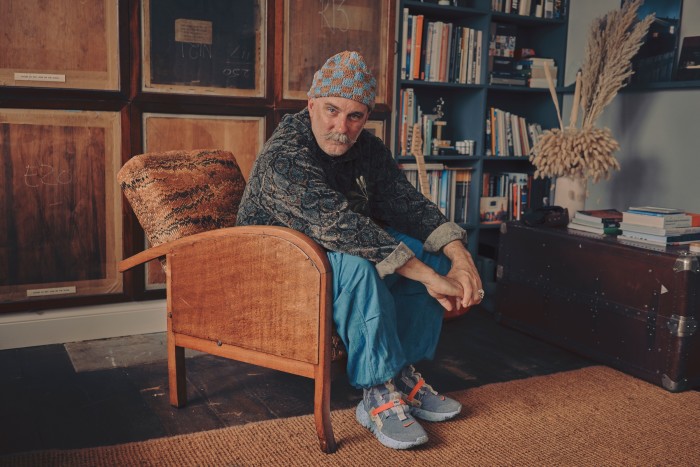
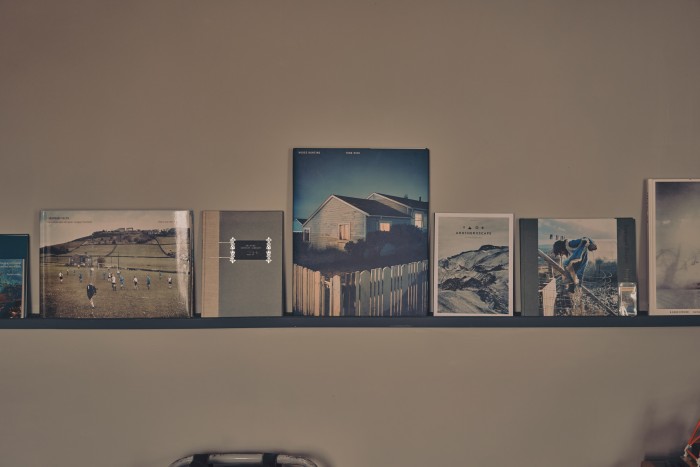
I have a collection of large-scale photography books, like one on Todd Hido. They are not to be flicked through; they are giant and it’s an effort to turn the pages, so you sit down and savour every image. It’s immersive and intimate; the opposite of scrolling through Instagram or watching Netflix. They’re a massive source of inspiration to me.
I’ve recently discovered soil. I’m fixated and so I’m learning everything there is to know from regenerative farmer Tim Williams and his wife Claire, who is a compost guru. At Haeckels I’ve been talking about my love affair with the ocean for so long, but the pandemic accelerated my interest in the land. As I watched people waiting for their food deliveries with increasing desperation, I realised we need to grow our own food in the community. Haeckels is also looking at how packaging can benefit the soil and how any waste can enter a circular system and give back.
The things I couldn’t do without are my family – I can’t operate without them – and my drum kit. I have a serious drum kit that has had its own life, but I bought a new practice one when we adopted our son. I needed something to help me compute this massive thing we were doing, and it has supported me for the past two years. I leg it to the shed when no one’s looking and just noodle around on the drums. It’s like stealing time to lose yourself. I couldn’t live in a house without some instruments.
The last item of clothing I added to my wardrobe was a set of black Patagonia waterproofs for being out in the elements.
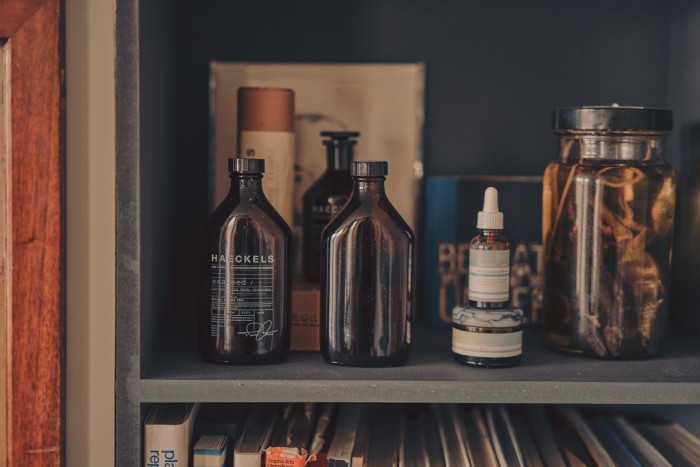
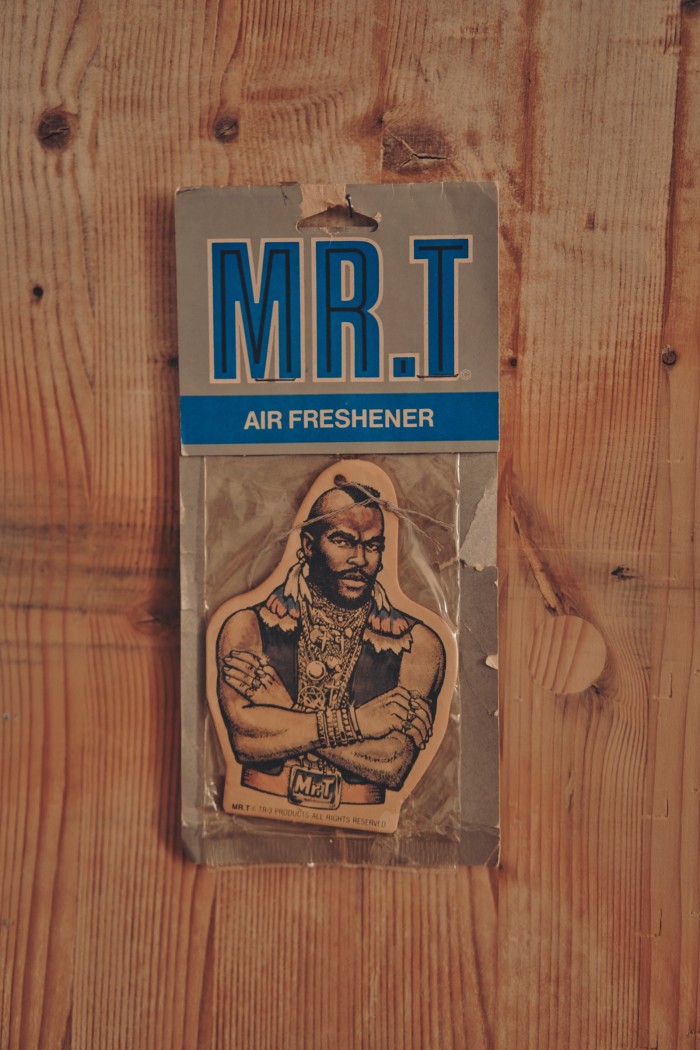
An object I thought I’d never part with is our beach hut on the waterfront in Margate. The waiting list for the huts is huge and although we loved it and felt so honoured to have it, ultimately these things are meant to be shared and we felt it was time to pass on the privilege.
My favourite room in my house is the study. The entire room is filled with odd things I’ve gathered over the years, such as a Mr T air freshener. I was homeless for two and a half years and my belongings were stashed all over the place, in garages, in bin bags in someone’s cupboard. When I finally bought a house, I got all my things back and that room became the nucleus of the business. Everything I pulled reference from was around me: books, objects, music. It all comes back to that room – the first bar of soap, the concept, the logo. Now it’s been taken over by the family and the dog; there’s a massive TV, Lego all over the place and a pair of pants drying on the radiator.
My favourite building is Dungeness Lighthouse. It feels unloved. It is surrounded by the UK’s only desert so there’s not much to see when you’re up there – and to me that feels the closest you can get to being on the edge of the world. I used to take people there I’d just met, as there’s nothing to do but walk and talk, no distractions. Then I met my wife Jo, and discovered her father was responsible for decommissioning the nuclear power station there. She used to go all the time as a child, which I took as a clear sign we were meant to be together. We got married in the lighthouse. We crammed into the cockpit with the core people, and everyone else curled down the spiral stairway; sonically, that was brilliant because the stairwell carried the sound down. It brought this cool intimacy.
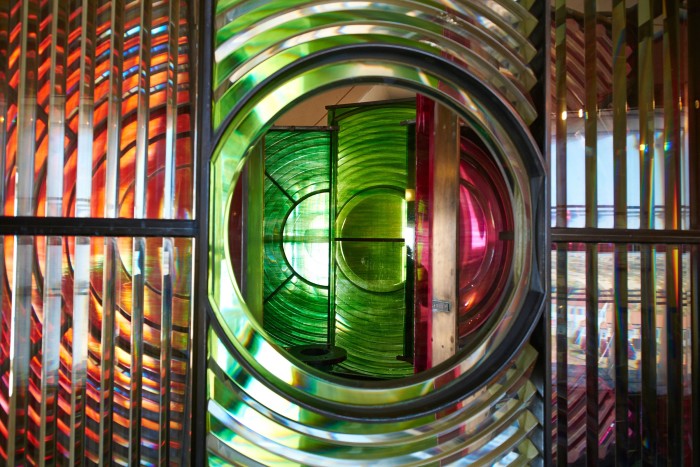
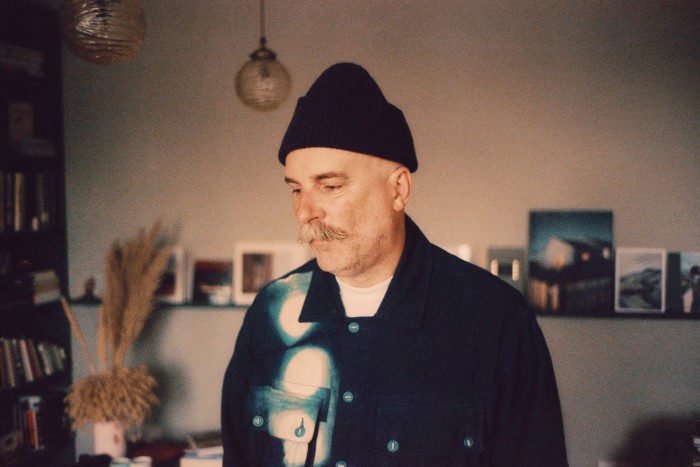
My wellbeing guru is Swami Ramdas. I’m at odds with the ambient side of wellness because I’m always looking for the facts. But during Covid I’d draw on some Ramdas phrases to prevent me from getting too bogged down. Running a business and trying to keep everyone happy was pretty full-on. It’s like being a parent: you’re no good to a child if you don’t look after yourself.
My favourite apps are TEND, which helps me plan my fictional farm – it has information on everything you could need for farming distilled into an app; it’s mind-bending – and Soundscapes, a collection of recorded sounds from nature. It transports you and I love that: I can be in a rice paddy in central Osaka or a market in New Delhi.
The artist that changed everything for me was Paul Klee. I love his book The Thinking Eye. I had an amazing teacher when I was at art college who introduced me to Klee and showed me that design was about how things interconnect. Nothing needs to be in boxes. It opened my mind.
The best bit of advice I ever received was from a Parisian exchange student called Gee – a mad artist who didn’t speak much English and who was only in my life for six months. He said: “Always take your boots off when entering a jungle; that way when you step on a snake, it won’t bite you.” Which I think means, be gracious and respectful, don’t go blazing in making a hoo-ha. We met when I was in my early 20s, we may have gone out and taken some fungi together, and later when I worked abroad and needed to form companionships quickly, experience someone’s else’s culture, that piece of advice held me in really good stead.
The best gifts I’ve received are a wooden apple turned by my father, which I use like a touchstone to soothe me, and a brilliant painting by my mother-in-law, which hangs in my office. It’s an oil on canvas that arrived in the post after a wedding we’d all been to in Greece. It shows my legs and the pristine white jeans I was wearing with my stinky white Converse, laces undone, and a dead rat lying at my feet. We’ve never discussed its meaning and I still can’t work it out; ultimately, I think it is the most beautiful insult I’ve ever received, affection camouflaged in this mildly aggressive imagery.
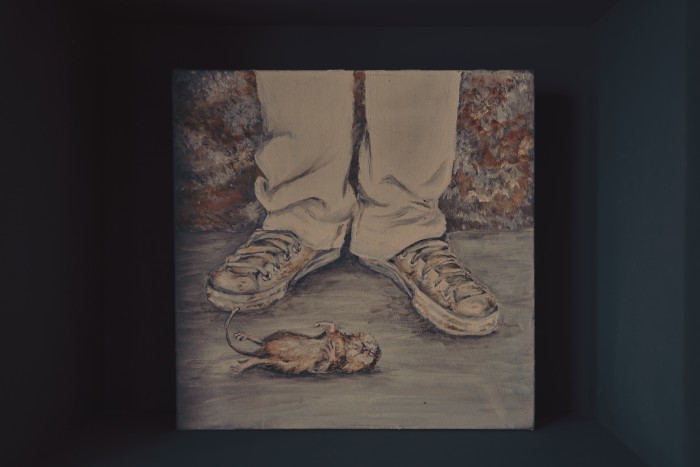
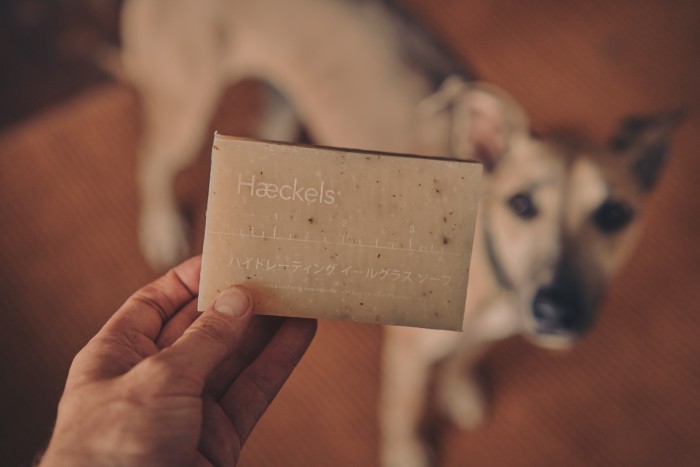
The grooming staple I’m never without is the Haeckels big bar of soap. I use it for everything: to shave, to wash what’s left of my hair. That’s why I created it. I’ve learnt so much about developing more complex products, but when I set out to make a bar of soap I wanted it to be massive and multitasking. £18, haeckels.co.uk
The best book I’ve read in the past year is the brilliant and beautifully designed Lo-TEK: Design by Radical Indigenism, by Julia Watson. It showcases how different indigenous communities utilise nature in incredibly complex ways. She argues that nature can be technological too, and if we explore the past and what nature can offer, it will provide a less intrusive solution to all sorts of things. taschen.com
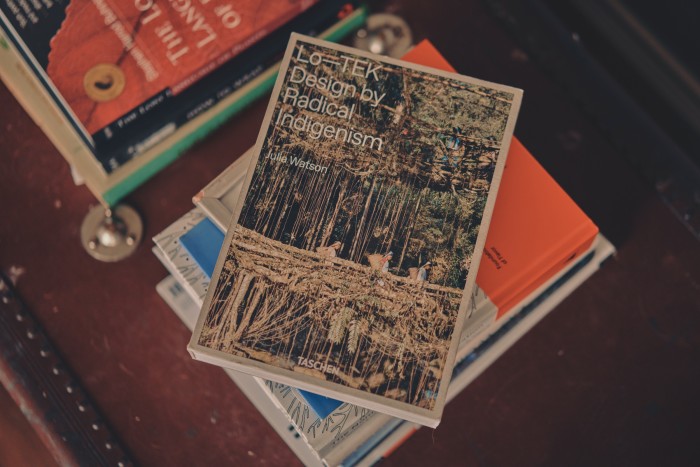
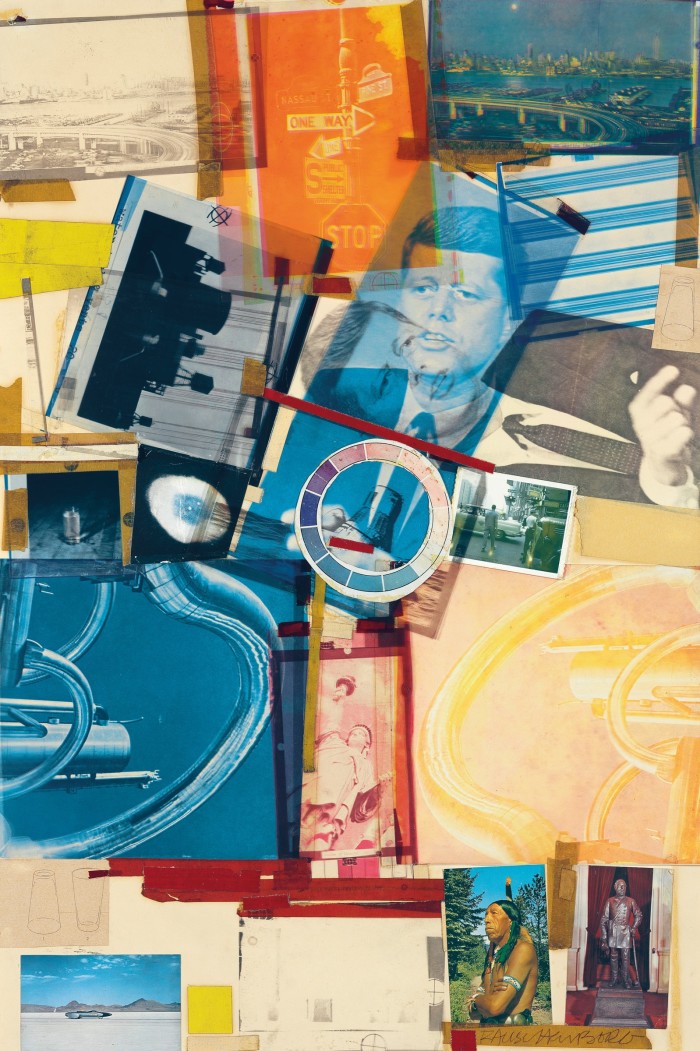
The one artist whose work I would collect if I could is Robert Rauschenberg. I was an art student who couldn’t draw, and the solution every time was a collage. I would collect things and put them together, which eventually led me to graphic design. His work, these huge pieces, meant something to me: he wasn’t bound by trying to draw an apple, he used parts of his culture, taking reference, and his work stuck in my mind. It’s how I design now: by putting things together and working out how they complement one another.
The best souvenir I’ve brought home is five wooden samurai training swords from Japan, which I was given when I was over there for a graphic design job. They were confiscated on the flight home, but I got them back somehow and they’re hanging in the bar at the Tom Thumb Theatre in Margate. They are a reminder of a different life I had in a far-off place.
In another life, I would have been a bank robber, which is what I wanted to be when I was a kid, or an explorer, either intergalactic or under the ocean, constantly absorbing smells, spaces, experiences, languages.
Comments